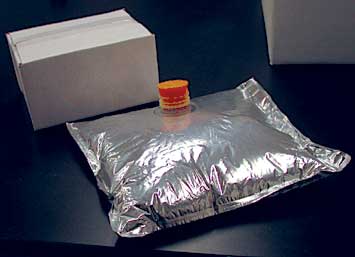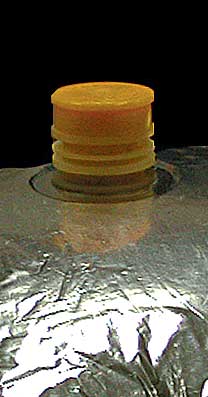

Haliburton supplies food processors with dozens of different culinary ingredients such as chili pepper purees, roasted vegetable purees, anchovy paste and minced, diced or pureed vegetables. Some products are sliced, roasted and cold-processed, but at least half are non-roasted vegetable purees that are pasteurized and shelf stable.
Because customers typically use Haliburton’s products in large batches, five-gallon pails offered labor-saving and safety advantages over metal cans. But seal integrity was an issue, with failure rates as high as 10 percent for some products. “Because these products are not refrigerated, all it took was the slightest break in the lid seal as it jostled in cross-country shipping,” according to Ian Schenkel, Haliburton’s president. “The product inside would mold and gas, and the pail lid would crown. Seal failure rates were just unacceptable.”
Bag-in-box has been used for almost 50 years in a variety of food and beverage applications, but is not frequently used for pumpable products like Haliburton’s. After exploring a number of alternative packaging solutions, the company installed its first bag-in-box filler last year. The single-head Astepo BF (Baby Filler) machine was made by Astepo Technology, a unit of Italy’s Bertuzzi Group that specializes in fillers for processed fruit and vegetables. The system uses a mass flowmeter that automatically adjusts to each different product density. The 2,000-pound batches of hot, pasteurized purees leave the cooking kettle and flow to the filler where each bag is manually inserted, then uncapped, filled and recapped by the machine before being manually cartoned.
Scholle Corp. supplies the bags. “We chose them for their quality products and excellent technical support,” Schenkel says. The five-gallon bags are made from a high-barrier, three-layer metalized polyester film with one-inch polyethylene spouts and snap-on caps that are heat-resistant for hot-fill applications. Although this particular spout can be used for both filling and discharge, Haliburton only uses it for filling because its customers generally slash the bags and pour out the product.
For cartons, Schenkel specified an extra-heavy, 200-pound, double-wall corrugate box supplied by Inland Paper Co. “We wanted to ensure good stack strength and puncture resistance to secure the product against forklift damage,” Schenkel says. “Even though the boxes still occasionally get ripped in shipping, the bags have never torn—they are incredibly strong.”
Finished products are manually inverted in the carton to ensure sterilization, then staggered 12 on a plastic pallet for cooling. Cartons later are repalletized 45 to a pallet, machine stretch wrapped using a Lantech Q Series Wrapper and labeled.
Besides slashing failure rates to zero, bag-in-box brought other benefits. The bags come already sterilized, which eliminates the chlorine wash required by pails. Empty bags and boxes take up less room on the truck and in the warehouse. The necessary bag, box and tape cost about a third as much as the pails and heavy-duty covers they replaced.
The bags withstand product temperatures up to 190°F, higher than the pails. There is no large fill area open to contamination or product splashing on the pail rims and requiring labor-intensive hand cleaning. The pails had to be inverted to sterilize the cover, and if there was any variation in the lid fit, the product could flow into the seal and eventually begin to mold.
“We check weigh the bags randomly, and have found the filler is amazingly accurate,” says Schenkel. “The weight variation (of a 45 lb. bag) is usually no more than one-tenth of a pound. This adds up to a very big savings.”
Customers can open and dump bags in a few seconds. Empty bags and cartons collapse and recycle easily and efficiently. Most importantly, customers no longer have to deal with spoiled product.
For more information:
Scholle
1-888-BAGNBOX
E-mail: scholle@scholle.com
http://www.scholle.com